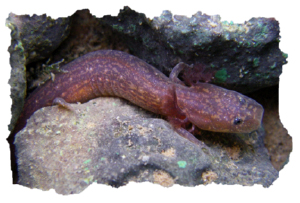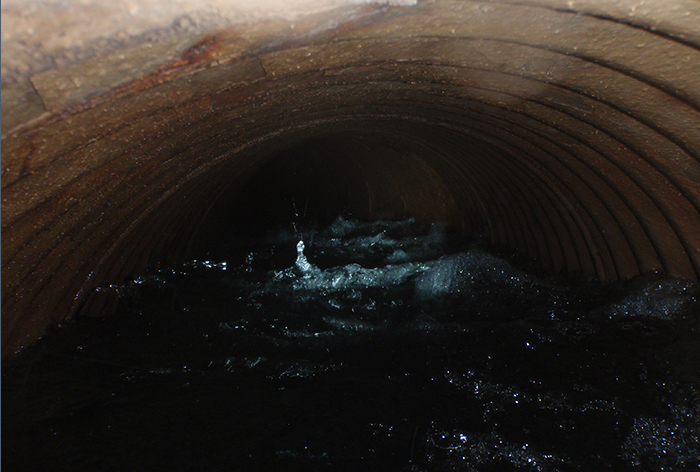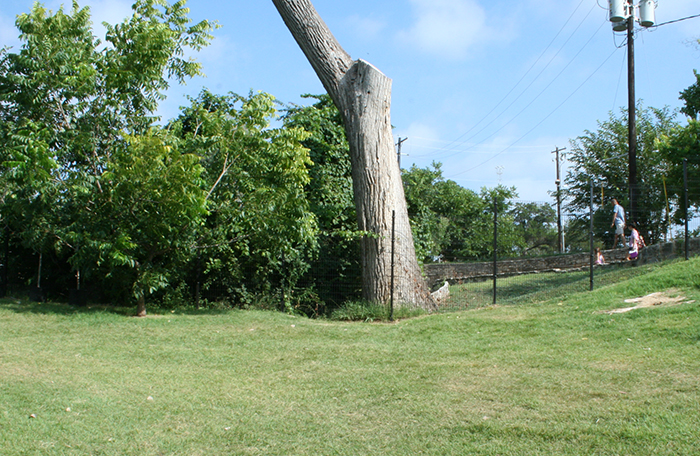Salamanders Win with Habitat Restoration
A recreated stream from Eliza Spring will be home to Barton Springs Salamanders
Long before Zilker Park was home to Barton Springs Pool, the Barton Springs Salamander made its home at the springs in Zilker Park.


Although we would not recognize the way the park looked back then, it is only in recent history that the appearance drastically changed. This photo from 1924 shows how Barton Springs looked 92 years ago. The dam was rebuilt each summer with rocks for swimming. There was also a natural stream that flowed down into Barton Creek from Eliza Spring shown on the right side of the photo. Eliza Spring is one of four springs in Zilker Park where endangered Barton Springs Salamanders are found and where salamander biologists frequently find the most Barton Springs Salamanders. The salamanders move between the aquifer and the surface water during their lifetime, using the springs to travel between the two.
The stream used to flow out of Eliza Spring for as long as the spring had surface water. The spring would have provided surface habitat to the salamanders that lived in Eliza Spring. It wasn’t until the late 1920s that the stream was eliminated by being buried into a pipe underneath the lawn of Barton Springs Pool. Burying water into pipes was once a common practice that we now know has many problems. This pipe is not a good environment for salamanders, either, and likely transported some endangered salamanders downstream to an area completely out of their habitat where they would not survive. Overall, this change meant there was less habitat for the Barton Springs Salamander. The photo below shows the inside of the pipe that replaced the stream.

Where the stream used to exist, soil was filled in on top of the pipe. The photo below shows how the area where the stream once existed looks today.

As part of the city’s 10(a)(1)(B) permit and Habitat Conservation Plan to U.S. Fish and Wildlife Service, the Watershed Protection Department will restore this historic stream through the Eliza Daylighting Project. This permit allows Barton Springs Pool to remain open for human recreation even though it is habitat for the endangered Barton Springs and Austin Blind salamanders.. This project is also part of the Barton Springs Master Plan. For this project, the buried pipe will be removed, and the water from Eliza Spring will again flow into a stream. New native riparian vegetation will surround the stream and will benefit the salamanders by providing shade to maintain the cooler temperature of the stream. The vegetation will also provide leaf litter to the stream, which is a food source to invertebrates that the salamanders eat. There are many benefits of riparian zones. This stream will increase the amount of habitat for the Barton Springs Salamander and improve the resiliency of the species. The conceptual photo simulation below shows how the area will look after the restoration is complete.

This exciting project will happen soon! The project will begin in Fall 2016 and be completed in Spring 2017. Barton Springs Pool will remain open during construction.
For more information, visit the project’s website: www.austintexas.gov/department/eliza-spring-daylighting
For more information on the threated and endangered salamanders that call Austin their home, visit: www.austintexas.gov/salamanders

